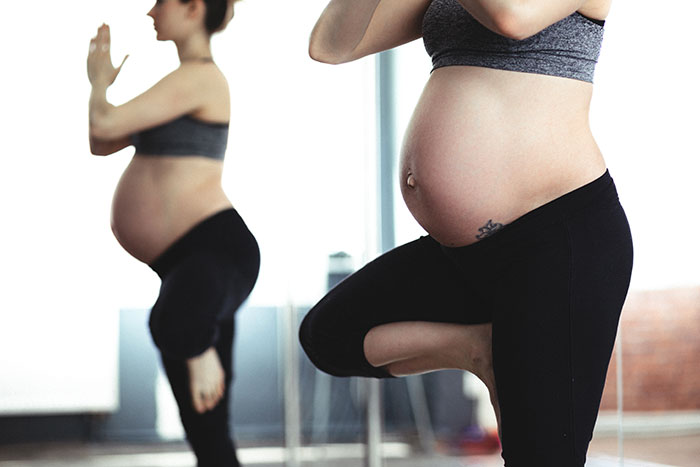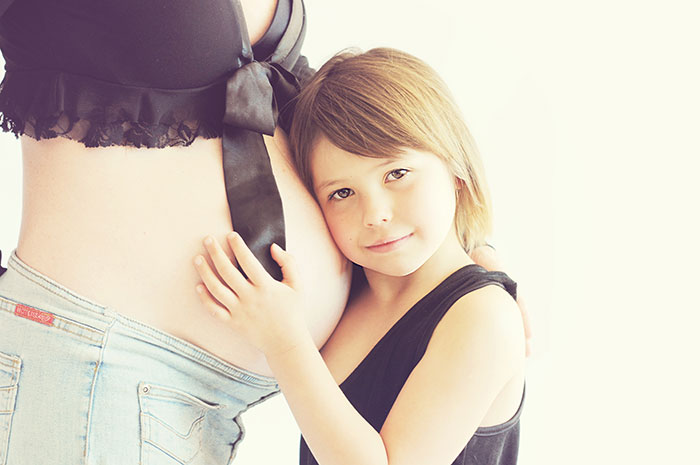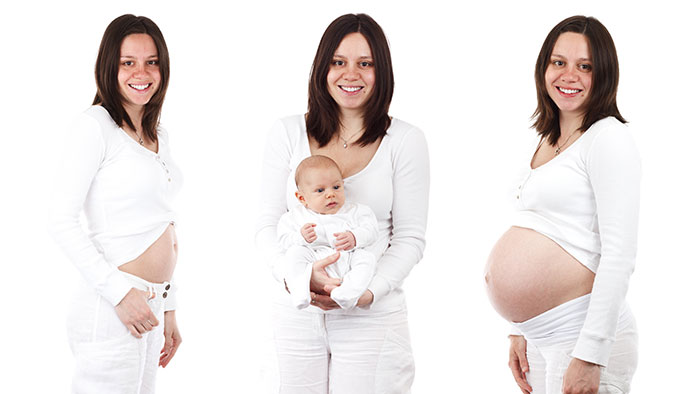Mother and child care has been described in great detail in Ayurveda. All basic principles of Ayurveda need to be applied to deal with the problems of maternal and foetal mortality. Rules of Ahara (diet), Vihara (lifestyle), Sadavrutta (moral conduct), along with varied therapies are used to tackle various problems. There is a need to take an in depth view of the causes. Major changes in lifestyle may be required. Uses of various Ayurvedic formulations using ghrtas and tailas (ghees and oils) have given wonderful results. Ayurveda aims at producing “Supraja” or healthy progeny. Ayurveda provides answers to some of the most worrying problems facing doctors today.
Ayurveda takes a very holistic view of pregnancy and childbirth. This is why it would serve us well to turn to Ayurveda for solutions to the many bewildering problems of pregnancy as well as maternal and foetal health. The union of the sperm and ovum starts a new life, this is not the limited view taken by Ayurveda.
Rather, Ayurveda describes the Garbha (foetus) as an amalgam of various factors: maternal, paternal, mental, dietary, and factors agreeable to the body and soul. It is possible to elaborate a great deal on each of these points. The more we understand each of these in depth, the more we eliminate various causes of infertility, congenital anomalies and maternal and fetal mortality.

We improve maternal and paternal factors by subjecting the parents to a rigorous routine of Panchakarma- Rasayana-Vajikarana regimens, by ensuring the parents follow the rules of Sadavritta (right conduct of speech, body and mind individually and socially), by ensuring that the parents’ diet and lifestyle consists of that which can be easily assimilated by their bodies, by including all the Rasas (tastes) in the right proportion in the diet and finally by worship (gods, guru, parents) and reading of holy texts, mantras and prayers etc. Indeed childbirth is not a random act of insemination.
In fact it is the miraculous coming together of various complex factors at the right time and culminating in the formation of an entirely new human being with a healthy mindbody apparatus. It’s almost a holy process where the mental-spiritual apparatus is just as important as the physical one. All this in-depth analysis is for the process of creating “Supraja” – healthy happy children with superior intellect, strong immune systems and a sound moral and spiritual base.

The concept of Agni is very relevant in pregnancy. A healthy Agni carries out three main functions
So where does this fit in, in today’s modern and chaotic times? Along with established causes of maternal and foetal mortality, like malnutrition, drug and alcohol abuse and trauma, there are new culprits rearing their heads. Our diets of fast food and a sedentary lifestyle are giving rise to a host of problems and are also responsible for many pregnancyrelated problems. Diseases like PCOS (polycystic ovarian syndrome) and endometriosis are assuming epidemic proportions. These are definitely caused by the unnatural lifestyles adopted by women today. Stress is emerging as a key factor in almost all disease processes and is a major cause of recurrent pregnancy loss.
Dietary irregularities, whether it is the wrong choice of foods, the wrong combination of foods or to little food, can cause pregnancy-related morbidities. We believe that Ayurveda has never been more relevant than it is today. Against a backdrop of rising lifestyle diseases (many of which are risk factors for pregnant women), we definitely need alternative answers. This is because in addition to the already known risk factors like thrombo-embolism, haemorrhage, hypertension and prolonged labour amongst others, there is an alarming rise in risk factors like psychological disturbances and obesity in India. These developments are unsettling. Just as we are beginning to get a grip on old risk factors, we find new ones raising their heads.

PREVENTION IS THE GOAL
Ayurveda is more about prevention than cure. The factors which constitute good health, i.e. balanced Doshas, healthy dhatus and proper Malas, optimally functioning Indriyas or sense organs, a happy contented soul and a balanced mind are the very factors that go towards a smooth pregnancy, labour and healthy progeny.
An in-depth knowledge of the physical and mental attributes of ones own Prakriti goes a long way in avoiding a lot of confusion as to what is beneficial (Hitkara) or detrimental (Ahitkara) to ones mind and body. Dinacharya (daily regimen) and Rutucharya (regimen for each season) have been described to keep the Doshas in balance and in tune with the changes in nature. If these are followed, chances of Dosha Prakopa (vitiation of the Doshas) are minimal. Following the regimen conducive to one’s constitution, not only keeps the body healthy, it goes a long way towards a trouble free pregnancy and smooth labour.
For instance, certain seasons are more troublesome than others and therefore their regimens should be strictly adhered. The possibility of Garbhasrava or Garbhapata (spontaneous abortions) is likely to be more in the Sharad (autumn) and Varsha (rains) due on increase in the Pitta and Vata Doshas respectively. A woman of Pitta and\or Vata Prakriti needs to be more aware of this. Liberal use of Ghrtas and Tailas (ghee and oil) is required here. The risk factor for a Vata prakriti woman increases in the autumn if she is living in a Jangala (extremely dry) place and undergoes rigorous physical labour (either work or excessive exercise). Ayurveda offers many such fascinating and preventive insights for unexplained dangers.
AGNI
The concept of Agni is very relevant in pregnancy. A healthy Agni carries out three main functions.
(1) It leads to the formation of a healthy Rasa Dhatu, the first of the seven body tissues, which nourishes the entire body and from which the Streebija or ovum is formed. The ovum is a part of Artava (a product of Rasa). Artava consists of pure, clear Rasa Dhatu which is deposited inside the uterus every month. This process starts immediately after menstruation. The inner wall of the uterus gets lined by the Rasa for a period of about 14 days. If at the end of this period, conception has not taken place, if the fertilised ovum has not embedded itself in this layer of Rasa, it is broken down and is converted to menstrual fluid. This Rasa provides support for the foetus. If it is impure, it cannot carry out either function, of supporting the foetus or preparing the Streebija or ovum. In women, impurities of Rasa Dhatu are often the cause of infertility. Conditions like PCOD can be attributed to impurities of Rasa. Since Artava is very similar to Tila Taila or sesame oil (and Shukra or semen is similar to ghee) both parents are given a preconception diet with these substances to enhance their qualities of the respective tissues.
(2)Secondly, Rasa is responsible for the nourishment of the foetus, its tissues, its sense organs as well as its Dosha, Dhatu and Malas.
(3)Finally, Agnimandya (unhealthy Agni) leads to the formation of Ama, a heavy, sticky, dense substance which is like a poisonous toxin incapable of sustaining life. We have seen in our practice many cases of spontaneous abortions due to the presence of severe indigestion and Ama. It is important to treat this condition before embarking on pregnancy. Ama also increases the risk of potentially life-threatening embolisms.
Issues like Viruddha Ahara (dangerous combinations of foods e.g. milk and fish and many other incompatible foods.) can, among other things, lead to congenital defects involving important organs and sense organs in the foetus. These should be addressed before and during pregnancy. If a person is what he eats then a child is surely what his or her mother eats!
AYURVEDA SHOWS THE WAY
Many of the pressing concerns of modern-day obstetrics can be addressed through the science of Ayurveda. One just needs to have an open mind to its rationality and scientificity. For e.g. haemorrhages still remain one of the major risk factors for maternal mortality. The cause is largely unknown. But the concept of Rakta Dhatu, its wide range of functions, the complexity of its composition, the causes as well as the dangerous consequences of its vitiation and the astonishingly vast range of herbs available for its treatment are described with utmost details in Charaka, as well as the Sushruta Samhita. These insights take shape in our practices to restore maternal health.
THE PREDOMINANCE OF VATA DOSHA
In Ayurvedic management of pregnancy, each woman is screened for signs of vitiated Vata. Through diet, medicines and-cleansing regimens, vata is pacified well in advance. All through the pregnancy, Ayurveda lays emphasis on Vata Anulomana. The important factor in haemorrhage is Vata Dosha Once again, everything concerning this fascinating Dosha has been described in vast detail. Anulomana of Vata (ensuring that the flow of Vata is unobstructed and in the right direction) and preventing vitiation, an increase or decrease in Vata is of the utmost importance in pregnant women.
All kinds of problems like ectopic pregnancy, haemorrhage, eclampsia, IUGR ( I n t rauterine growth retardation) and difficult labour come under the purview of Vata Dosha. We have seen that women who are given therapies for management of Vata have surprisingly easy pregnancies and deliveries compared to those who are not. Therapies like Pranayama which regulate Prana Vayu, are immensely useful.
Ayurvedic mother and child care involves Masanumasika Paricharya (herbs and food for each month of pregnancy), some cleansing therapies and advise on actions. But there is more to it. We physicians find all the information useful for dealing with complications of pregnancy in the classical texts. For instance, the Sharirsthana (of CS) describes only the Samprapti (pathophysiology) of some conditions unique to pregnancy. There, the management is described in concise and easy term. Another important preventive factor is the role of Manas or mind.
Ayurvedic mother and child care involves Masanumasika Paricharya (herbs and food for each month of pregnancy), some cleansing therapies and advise on actions. But there is more to it. We physicians find all the information useful for dealing with complications of pregnancy in the classical texts. For instance, the Sharirsthana (of CS) describes only the Samprapti (pathophysiology) of some conditions unique to pregnancy. There, the management is described in concise and easy term. Another important preventive factor is the role of Manas or mind.
It is found that negativity between the parents especially at the time of conception can cause many problems, for e.g., conception may not take place, or the child may have many congenital problems or may not be born full term and i.e. the chance of miscarriage is increased. As part of the preventive regimen there are certain rules that are termed as “Garbho-paghatakar Bhava” or factors harming or destroying the fetus. These are things a pregnant woman must avoid for two reasons, one to avoid disturbing Vata Dosha (which can bring much morbidity) and second to avoid harming the fetus.
“Garbho – Paghatakar Bhava” include: excess exercise (including excess sexual activity), lifting heavy things, excess travelling, sitting on hard surfaces, suppressing natural urges like urination, fasting (or not getting enough nourishment), eating hot, heavy, pungent food, sleeping on the stomach, looking into deep wells or over high cliffs (heights) and eating too much meat. These are to be avoided by the mother to be. She needs to be in a happy frame of mind for her well being.
OILS
We have found that the use of certain oils during pregnancy is immensely beneficial in a number of ways. We primarily used Bala oil which was prepared from the formulation given in Sharangdhara Samhita. Bala oil is highly favoured in Caraka Sanhita, which issued also for the treatment of infertility and many other diseases caused by Vata dosha. Bala (Sida Cordifolia) is a herb which is sweet, cool, alleviates Vata and Pitta and is nourishing and strengthening in nature i.e. its action on the muscles and ligaments of the body is a toning strengthening one.
The texts describe Snehana as very important in both ante and postnatal care. It is also recommended for the newborn. Indeed, one of the first therapies for a newborn baby is Snehana or Abhyanga. Since there is such a heightened amount of Vata activity in the pregnant body, Snehana becomes of paramount importance. Correction of Vata takes precedence over all other problems in the Garbhini.
We have found that the women who followed regular Snehana as compared to the women who did not, had less complications during pregnancy, recovered faster from child birth i.e. suffered less of the debilitating effects of childbirth, and most importantly, tended to have a natural childbirth. Here it would not be an overstatement to say that the effects of Snehana, whether internal or external, with Ghrita or Taila (ghee or oil) were nothing short of miraculous. We recommended the use of Bala oil from the first month of pregnancy in the form of Abhyanga. However it is most needed from the second trimester. It alleviates leg cramps and low backache, which are common complaints as pregnancy progresses. These are often severe enough to cause insomnia. Pregnancy related sciatica is another troublesome problem for which Abhyanga with Bala provided much relief. Patients who used Bala regularly also had negligible stretch marks and itching. Post delivery, the skin was remarkably smooth and unblemished. Also the tone of the muscles after delivery was surprisingly good in these women. They reported less laxity or looseness of their musclesespecially their abdominal muscles. These women were mobile much faster and were relatively less fatigued as compared to other new mothers.


















 Other
Other